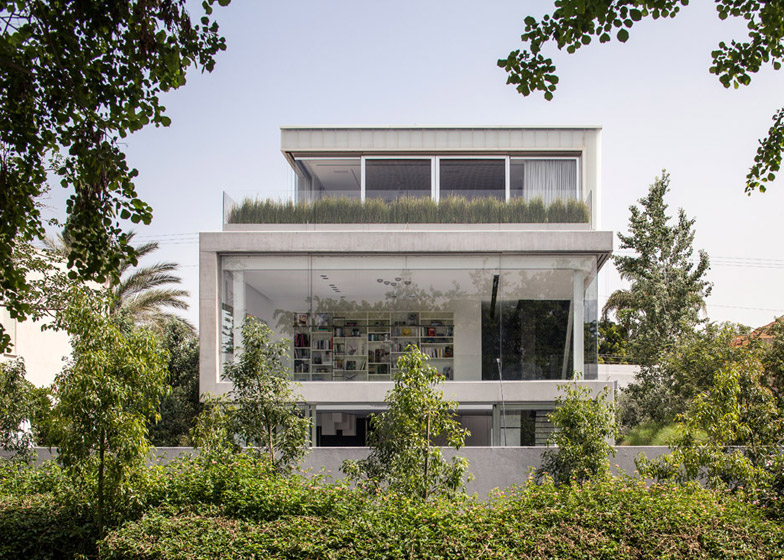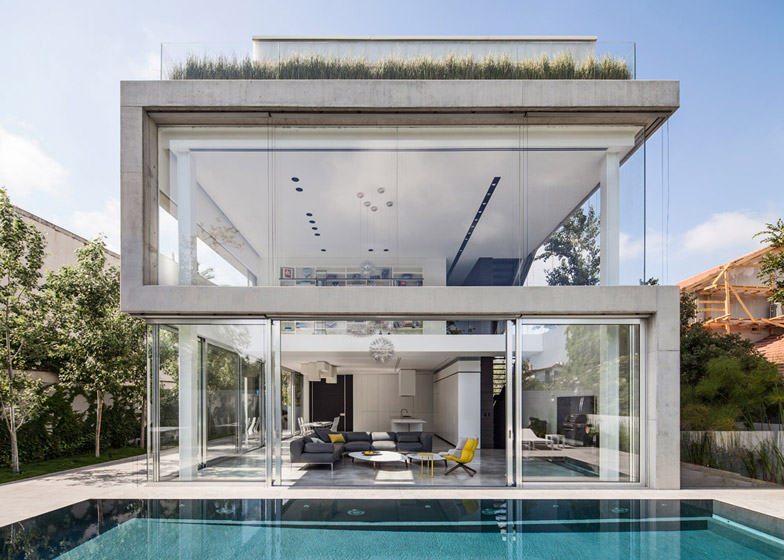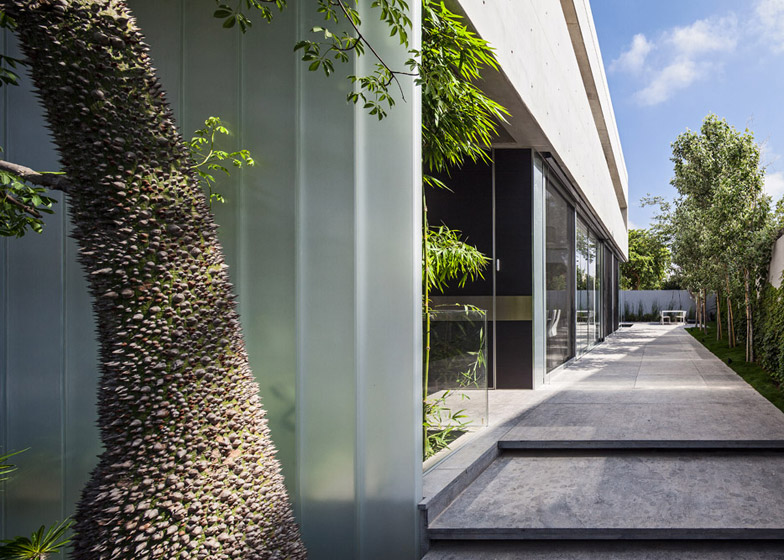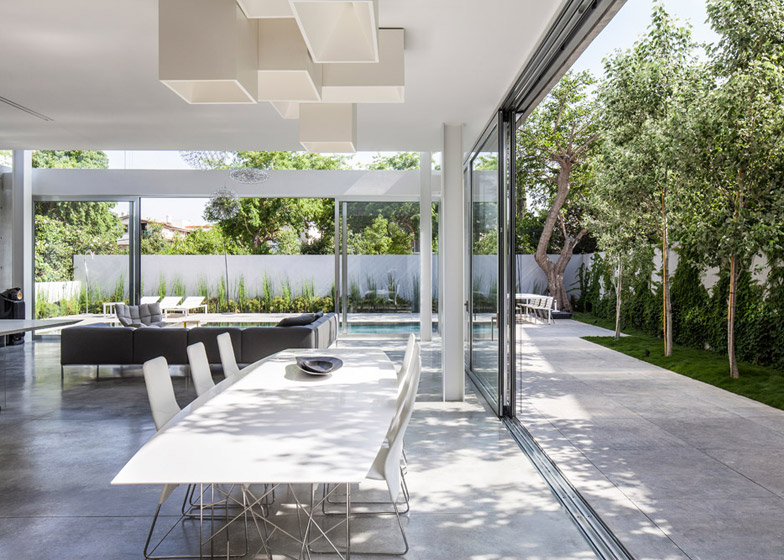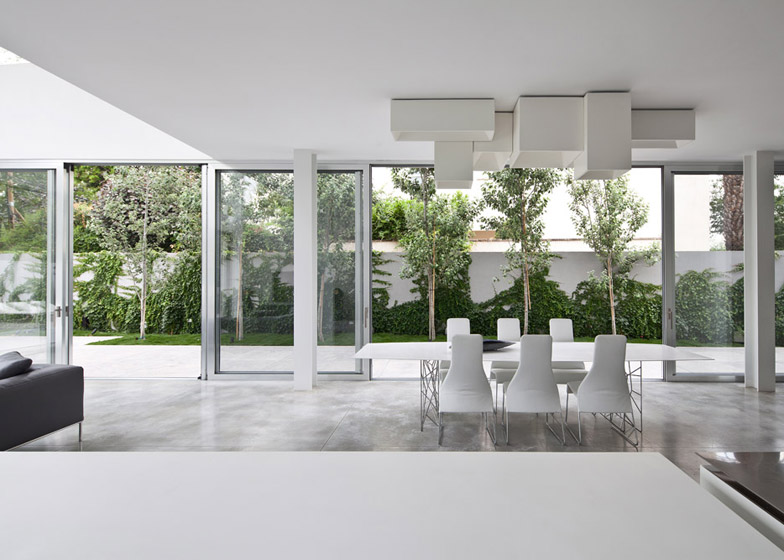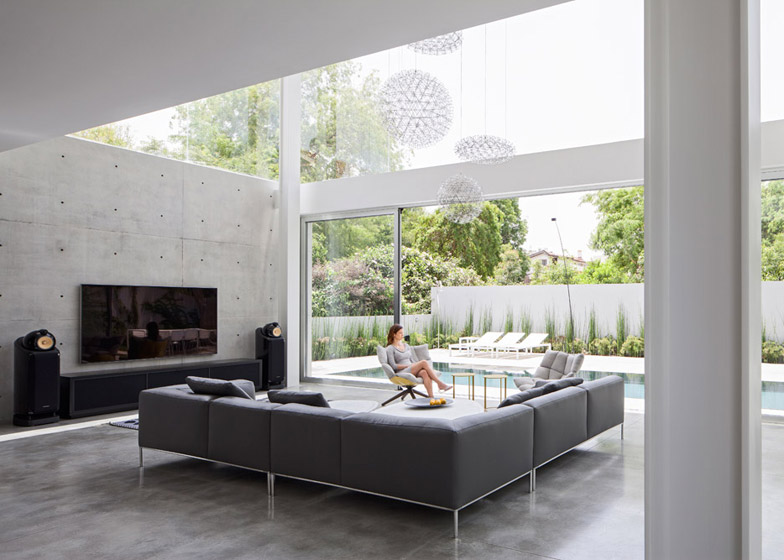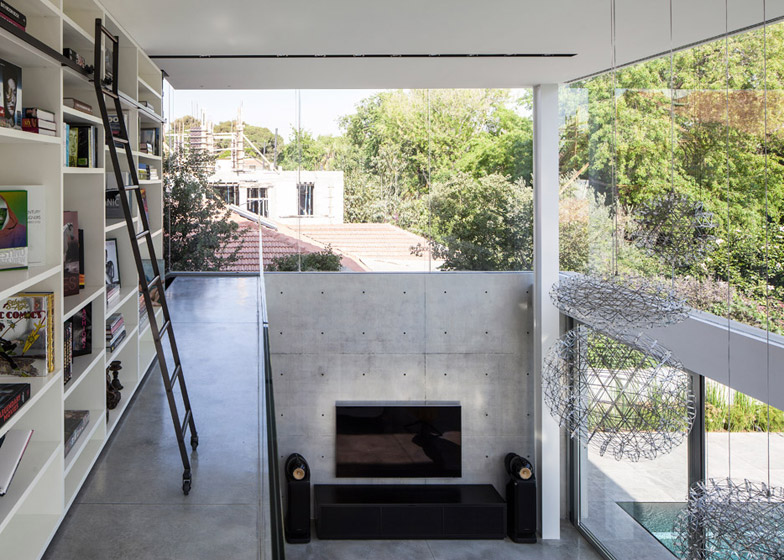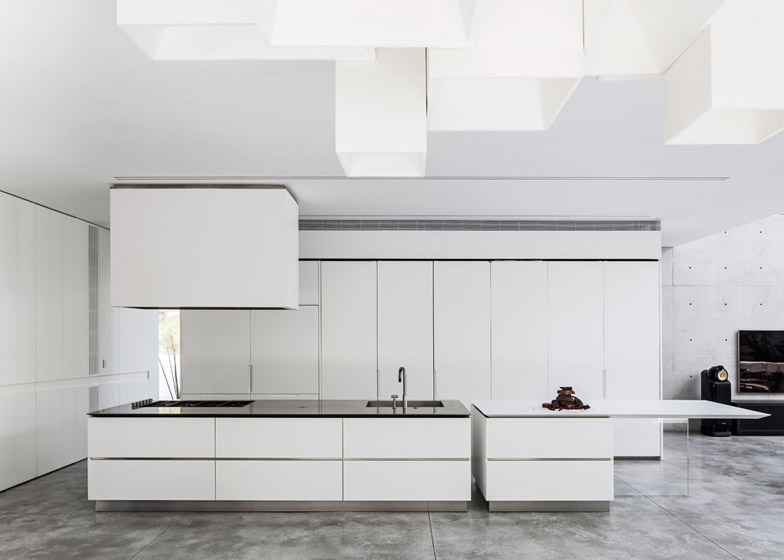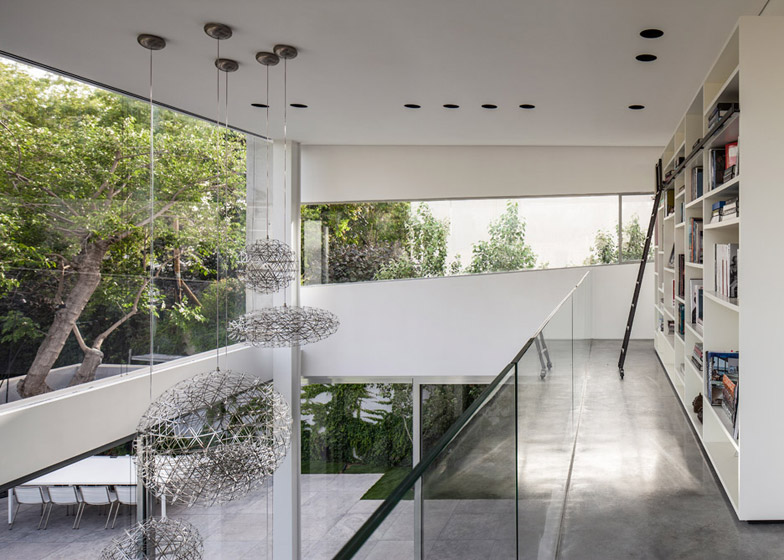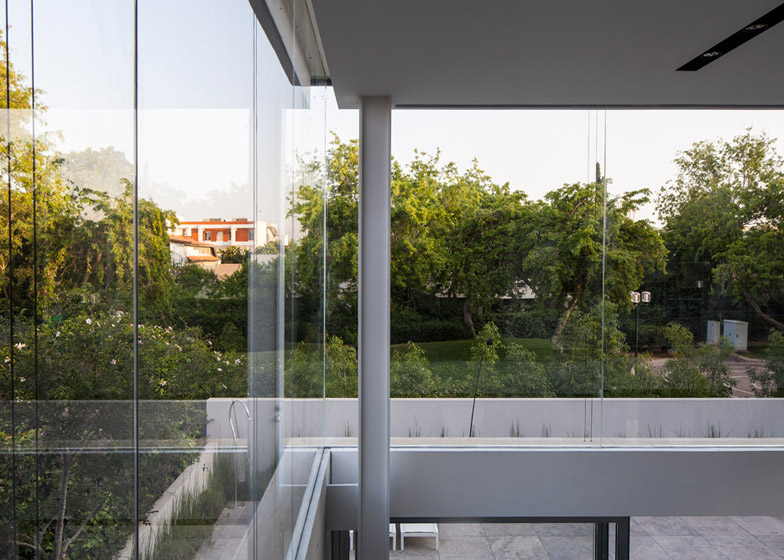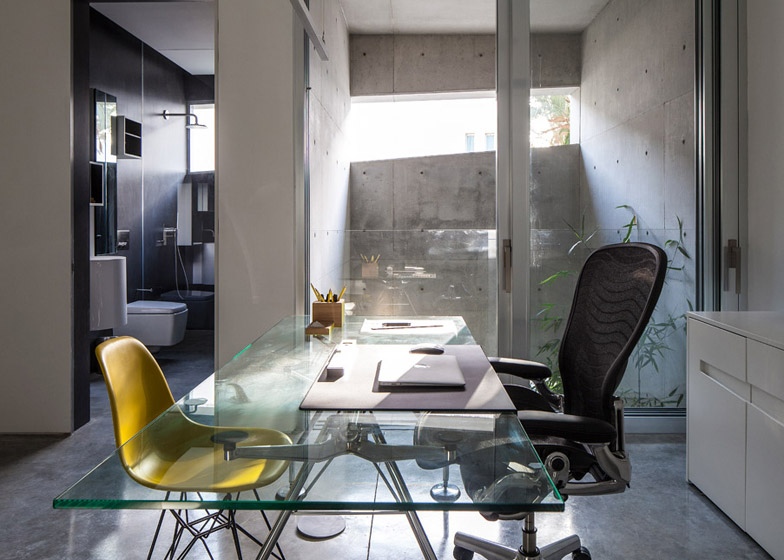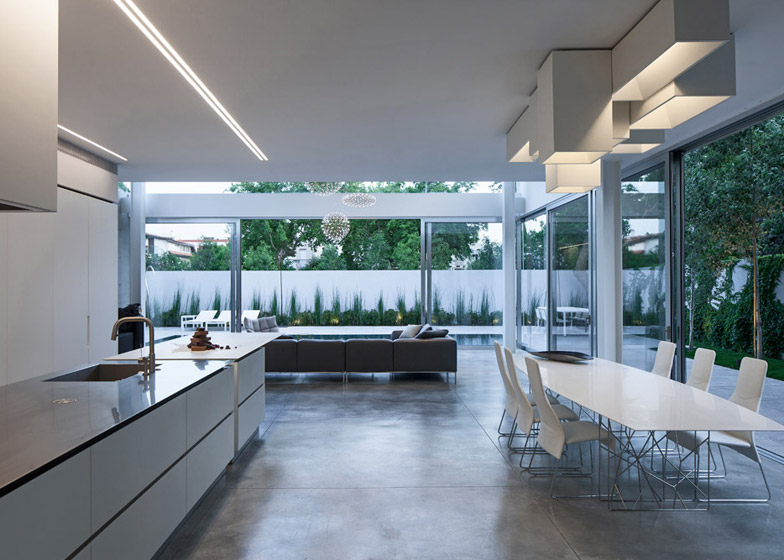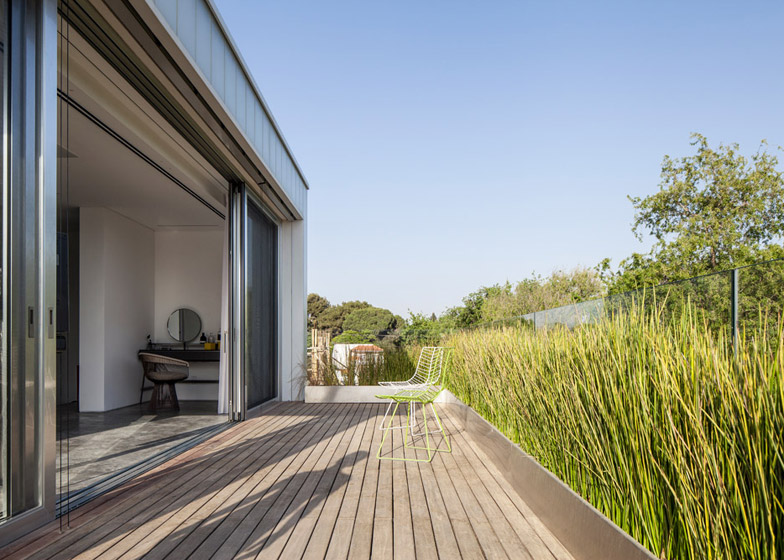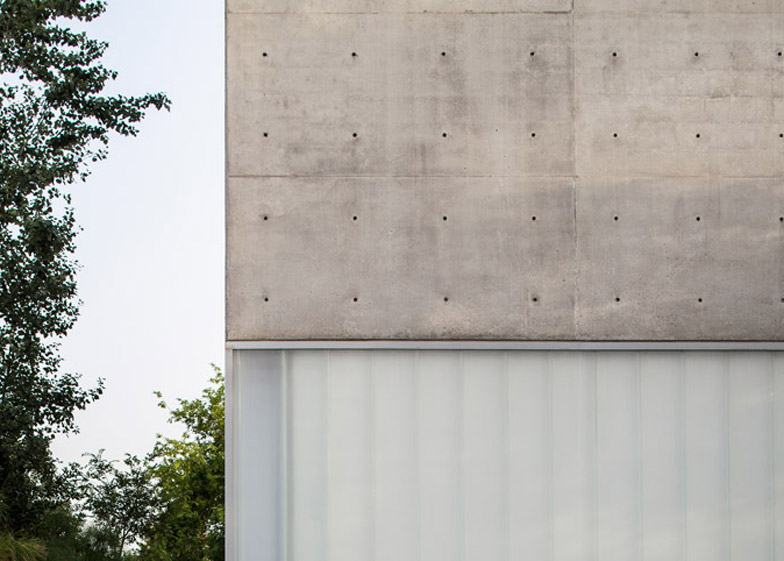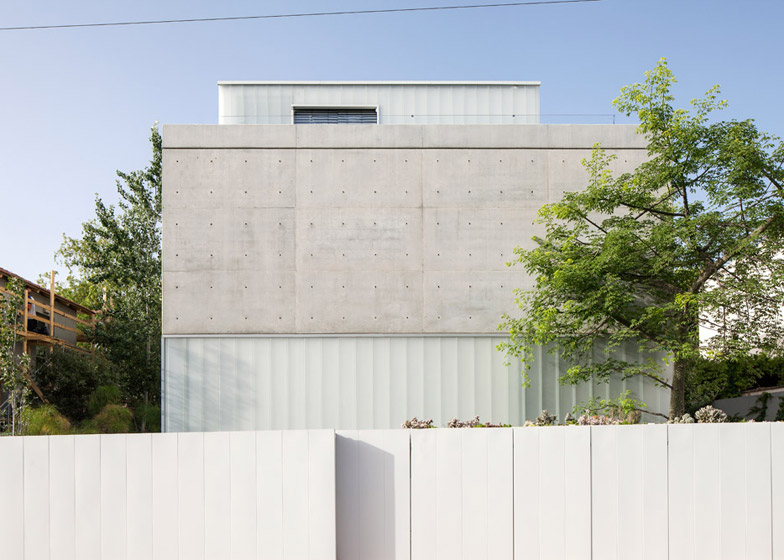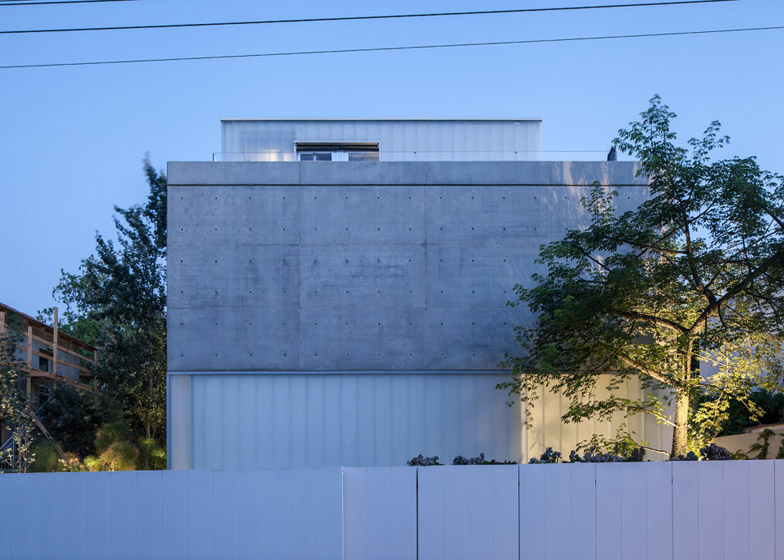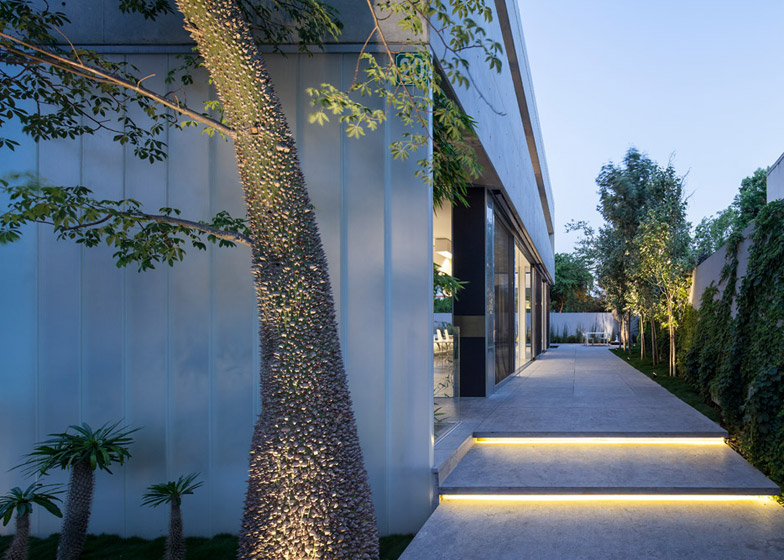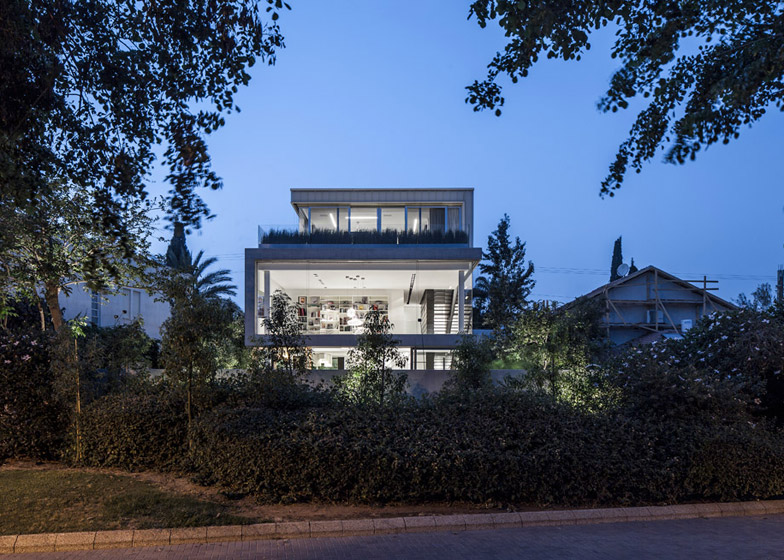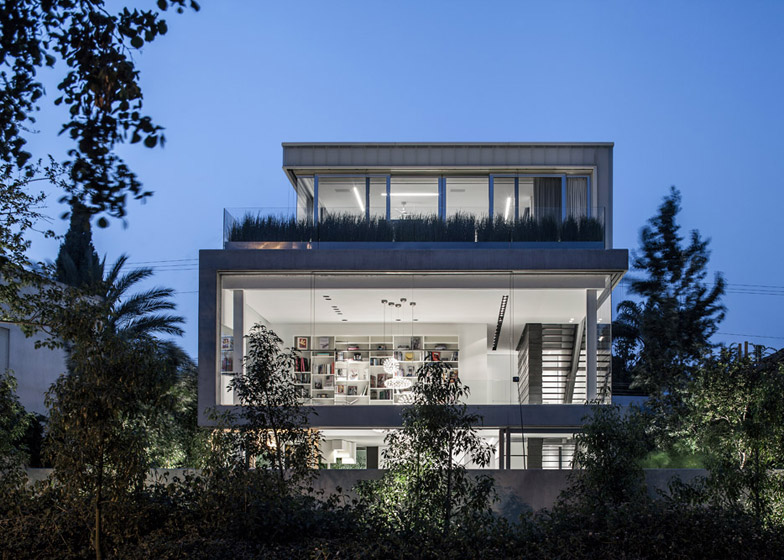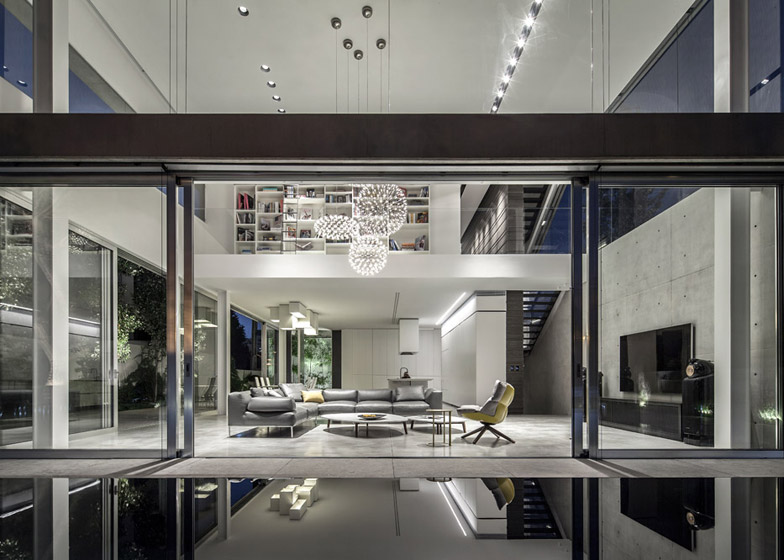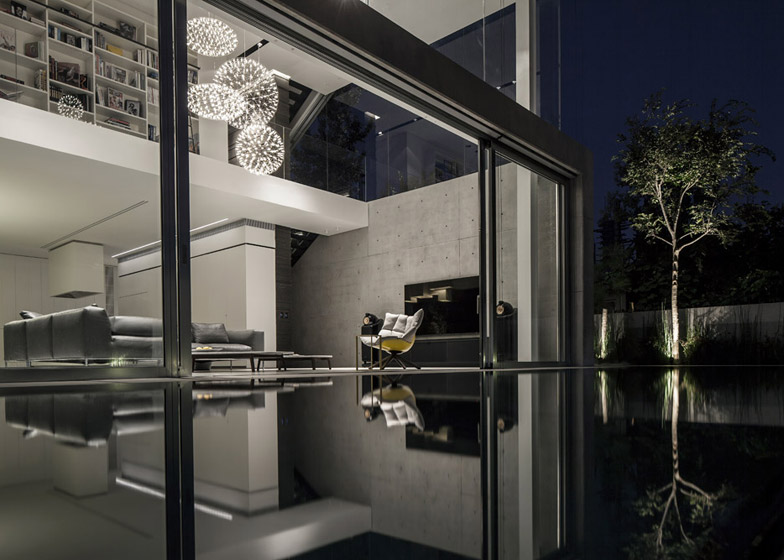Concrete slabs, translucent glass planks and frameless window walls offer varying degrees of privacy for this house in the Israeli city of Ramat Gan by Pitsou Kedem (+ slideshow).
Kedem's Tel Aviv-based studio – which also recently completed a monochrome penthouse apartment – sought to create seclusion at the street-facing front of the house, but to give a more open feel to the spaces facing a private garden at the rear.
A high wall separates the house, named Concrete Cut, from the street. Behind it, three distinct layers of material present a solid and impervious elevation towards the rest of the neighbourhood.
The bottom and top layers are made from translucent glass planks – the same material used by British architect Carl Turner for his Manser Medal-winning home.
They allow daylight to filter inside, and their tone and uniformity complement the robust surface of the concrete sandwiched in between.
"Viewed from the front, [the house] looks like a monolithic operation of materials with a deep, monochromatic range of colours," said the studio. "Three rectangular prisms, laid upon one another into a peaceful composition, stable and subdued, appearing as heavy masses."
"A second, discerning glance reveals a dramatic encounter of materials taken from two separate worlds – poured, massive concrete and glass panels, creating a semitransparent wall with a decisive line running through it."
The lower portion of the glazed wall shields an entrance tucked behind one corner. Bamboo stems that stretch upwards from the basement level are backlit by light coming through the translucent surface.
A large pivoting doorway opens directly onto the open-plan kitchen and dining area, with the rest of the space along the front elevation accommodating services including a bathroom, laundry, wardrobe and a lift.
At the far end of this space is a double-height lounge that looks onto the terrace and swimming pool through floor-to-ceiling windows.
Large steel pillars in the corners of the room provide evidence of the building's supporting framework, while the concrete cladding extends in a sinuous line from the roof, down one side of the windows and across the facade before descending to the ground.
"While the front facade is an abstract creation conceptually assuring the blending of identity and function, the rear facade graphically expresses three-dimensionality, the probing of depth and the feeling of brightness and freedom," the architects said.
The large windows at ground floor level incorporate sliding doors that open onto the poolside terrace and extend along the west elevation to fill the lounge and dining space with natural light.
On the east elevation, a concrete wall provides a surface on which to hang the television.
A window above extends diagonally along the line of a staircase that features open treads to maintain the openness of this circulation area.
The stairs ascend to a first floor containing bedrooms, a study and a bathroom behind a mezzanine library that overlooks the lounge.
Another staircase leads down to a basement level providing a private area for the children and a personal gym. A glazed wall lining the east side of this submerged storey opens onto a narrow yard.
The children's bedrooms are located on the first floor, while the master bedroom suite is accommodated in a translucent glass box at the top of the building.
Full-height windows flanking the bedroom at the rear look out onto a roof terrace lined with a glass balustrade that extends along two sides of the building.
Architect Pitsou Kedem's own house also combines concrete and glass to evoke the aesthetics of Modernist architecture, while another house designed by the studio near Tel Aviv features a perforated steel screen that casts a chequerboard shadow on its concrete walls.
Photography is by Amit Geron. Styling is by Eti Buskila.
Project credits:
Architect: Pitsou Kedem Architects
Design team: Pitsou Kedem, Noa Groman
Architect in charge: Noa Groman
Lighting design: Orly Avron Alkabes

